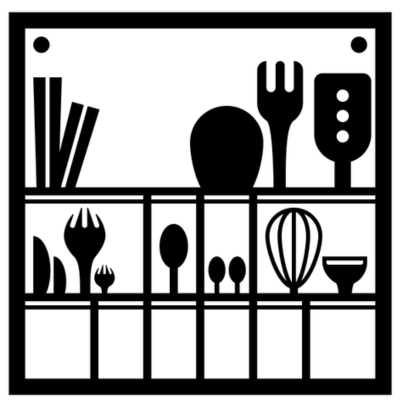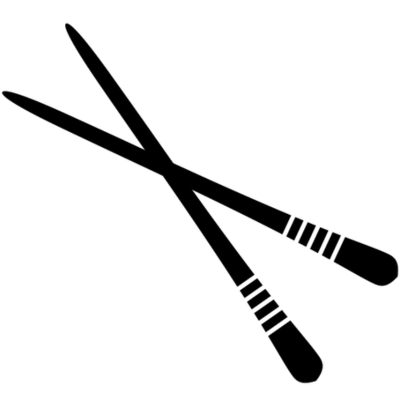STEP-BY-STEP INSTRUCTIONS WITH PICTURES
I bought this duck from the Asian market. It was previously frozen. Once it is defrosted, it has lots of liquid. I like to rinse it thoroughly in the sink. If you can not find a duck, you can use chicken leg to make this recipe. Do not use chicken breast because it will turn out stringy and chewy at the end.

Use a pair of scissors to cut open the cavity - slightly off the center in between both of the breasts. Once the duck is opened up, you can clean up the inside. Trim off any unwanted parts such as the connective tissues, the huge piece of the neck skin, the butt, and some duck fat. Then rinse thoroughly. I like to deal with the whole poultry in the sink so I don’t get water splatters everywhere. If you are worrying about cross contamination, you can spray some Dettol after to disinfect the sink.

Oh, this duck came with a long piece of neck, you can discard it if you want. But it is my favorite part. I definitely will keep that.
Once the duck is nice and clean now. Use paper towels to absorb the moisture.

Next, we are going to flatten it. Place it skin side up. Press it down firmly. Try to break up the tight, ribs and clavicles You should be able to hear a few cracking sound. That looks good.

We will coat the duck with some coarse sea salt. The amount should be 5% of the total duck weight. This guy is about 2 kg after I trim off all the unwanted part so I am using 100 grams of salt. Don’t worry that it be will too salty because it is coarse salt, it doesn’t dissolve easily. Some of the salt will fall off. Tomorrow we will rinse off the salt as well.

The name of this dish is called Jiang ban Ya酱板鸭. Ban 板 means using a flat board to flatten the duck. Let’s cover it with a cutting board. Weight it down with a huge pot that is filled with water. The salt and the pressure here is to help to press the moisture out of the duck. Later on, when we braise it, it will absorb the flavor from the brine. This needs to sit in the fridge for 12 hours.

I salted a duck yesterday, you can see a bit of liquid at the bottom of the tray, which is the purpose of salting and pressing the duck. Discard that liquid. Put the duck in the sink on top of a rack - skin side up. Pour some hot water to rinse the duck thourghly. This will shrink up the skin and make it really smooth. Also, it will wash off all the salt so the duck will not be too salty. Be sure to get the cavity side as well.

Use more paper towels to absorb the moisture. Wrap a baking pan with tin foil. Place the duck on top of it. Star preheat the oven to 450 F.

When the oven is almost done preheating. Heat up a heavy-duty cast-iron skillet until it is smoking hot. Flip the skillet over and apply a thin layer of oil at the bottom. If your skillet is well-seasoned and taken care of, the bottom should not be dirty.

Stick the duck into the oven and quickly place the hot heavy skillet right on the top. I love to hear that nice sizzling sound. Bake this for just 30 minutes. We are not trying to cook the duck though. We just want to render the fat.

While waiting, we can prepare the brine. To create a complex fragrance, you will need to gather all these spices: 2 slices of sand ginger, 1 star anise, 1 small cinnamon stick, 2 bay leaves, 2 white cardamoms (if you don’t have it, you can use 2 green cardamon or 1/2 of a black cardamon), 1 gardenia pod (this is optional but it adds a bright orange color and makes the food looks attempting), 2 cloves, 1 tsp of white peppercorns, 1 tsp of fennel seeds, 3 tbsp of Sichuan peppercorn and 1/2 cup red dried chilies. Be careful of the amount of Sichuan peppercorn and red dried chilies. Please adjust them based on your preference.

In a large wok, drizzle in a couple of tbsp of oil, toss in all the spices, along with some ginger slices, 5 cloves of garlic, 2 scallions, and 1 tbsp of Sichuan Dou Ban Jiang
Stirring over medium-low heat for a couple of minutes or until fragrant. Pour in 6 cups of purified water. Bring this to a boil.

Add 5 tbsp of soy sauce, 3 tbsp of dark soy sauce for the color, 1/4 cup of Chinese cooking wine, 5 tbsp of rock sugar to balance all the tanginess. If you don’t have rock sugar You can also use 4 tbsp of granulated sugar. Normally, we will add more salt to this brine but because the duck is salted so we don’t need to add additional salt.

Let this simmer on low heat for 15 minutes. During this time, you can take the duck out of the oven. The cast-iron skillet here is to help to press the oil out of the duck while baking. As you can see, there is a lot of grease formed in the banking pan. If you don’t have a cast-iron skillet, you can wrap a heavy-duty brick with tin foil. Preheat it until hot and place it onto the duck.

Transfer this duck into the wok. Actually, it is very big and it doesn’t fit. I am just gonna quickly cut the duck in half. When I tested this recipe, I always work with half of a duck so this is a little bit unexpected. Put it back in the wok. The liquid is still not enough to cover all the ingredients. That is completely fine because I will put something on the top to weigh it down. This needs to be braised on low heat for 1 hour. What I will do is to come back every 15 minutes to give it a flip to ensure even cooking.
Just a note here, if you have a big stainless steel pot, try to use that to do the braising because the high salt solution will strip off the seasoning that you have been building on your carbon steel wok. I don’t have any cookware that is bigger than this wok. However, I will talk about how to restore the wok after the braising at the end of this post.

Since we got plenty of time to wait, just want to give a little bit of information about the brine that we made to braise the duck. It is the starter of the Chinese master brine. We call it Lushui (卤水). If you know how to store it, it can be reused forever. Every time you reuse it, the braised meat and other ingredients will infuse their flavors back into the stock. So, the Lushui will continue to accumulate and create a richer, more complex flavor. Many Chinese restaurants treasure their Lushui like heirloom because it’s loaded with layers and depths of flavors. They literally passed the Lushui from generation to generation. I can go on for hours to talk about this. If you are interested in developing your own Lushui, here is a full demo video. You can click here to learn about it.

After 1 hour of braising, the duck is almost fall off bone tender. However, we are not done yet. We have to transfer this duck back onto a baking rack - skin side up. Stick it into the oven again. Set the temperature at the lowest possible. My oven can only go down to 150 F. Let it dehydrate for 6-8 hours. The time varies depending on your oven’s minimum texture.

Alright, let’s take a look at the duck. You are probably thinking, why are there 2 ducks? I thought you made one. Well, It takes a while to dehydrate, we actually came back to pick up the filming the next day. Since I already salted an extra duck in the fridge. So I took some time last night to roast, braise and dehydrate that duck as well. I double the brine so I was able to braise the duck in a whole piece. You know, in our culture, we like to keep things whole for good luck purposes. You don’t have to.
Oh, I forget to mention that, the duck needs 6-8 hours of dehydration but the neck only needs 4-5 hours so you will have to remove the neck from the oven early. But I already ate it last night so I can’t show you what it looks like anymore. However, the main part is the duck and this is how they look.

The bones are poking out. That’s a good sign because we braised it really tender. After the dehydration, the meat will shrink and the bones will poke out like that naturally. The color is much darker. The size is smaller. That means the flavor really concentrated. The skin feels kind of crispy.

I know you are probably thinking that the duck must be extremely dry after such a long time dehydrating. No No No! It is surprisingly juice and tender inside - Look at that. I know it is hard to believe but it is so good. The outside is dry but in a pleasant way. It is not the chewy stringy type of dry. It is the crispy kind of dry. The meat that is close to the skin side is kind of like the jerky texture. The low and slow dehydration really concentrates the flavor. The duck is extremely savory and packed with aroma. This is by far, my favorite duck recipe. I know it is complicated and I spend 30 hours to make it but it is worth every second.

How to Restore The Wok After Braising High Salt Content Liquid?
- Simply wash the wok with warm water without soap. Use a soft sponge to rub around to remove any stubborn residue. Rinse it thoroughly.
- Put it back on the stove. Wipe the moisture with paper towels first. Then turn the heat back on medium and heat it for 20-30 seconds to evaporate the micro moisture.
- You will see the wok lost its shine, it doesn’t look smooth anymore, kind of like a mat texture. That is caused by simmering liquid for a long time. Don’t worry. Just drizzle a couple of drops of cooking oil. Rub it with a paper towel all over the wok.
- Store in a dry air place
This instruction is actually the most basic carbon steel wok care maintenance and you should do this after everything you used the wok. I have cooked with this wok for 4 years now and it is well-taken care of. So it recovers immediately after I apply the thin layer of oil. I can use it as usual and it will be non-stick. If your wok is new, it may take a few more times of cooking and maintaining to recover for it to become non-stick again.
A lot of people don’t know that seasoning the wok is not a one-time job. When you cook with carbon steel wok, you will always strip away some of the seasonings especially when you are making a liquid dish. Oil and heat are what build up the seasoning. If you are cooking with oil or applying more oil after you washed and dried the wok, you are basically helping with the seasoning development. This is a replenishment process that should keep going on forever. Eventually, the wok becomes super shiny and non-stick. It does take some time for the seasoning to build up though- about a half year or it could take a few years if you don't use it often. I do recommend cooking with the wok as often as you can to speed up the evolution of the seasoning. Trust me, you will be surprised by its performance.
If you don’t own a carbon steel wok yet, consider buying this one. It is my own brand. It is incredibly reliable. I have been using it in almost every one of my videos. The food always comes out amazing. The link is in the description. Go check it out.

















































































